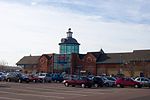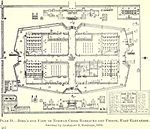Yaxley F.C.
1962 establishments in EnglandAssociation football clubs established in 1962Eastern Counties Football LeagueFootball clubs in CambridgeshireFootball clubs in England ... and 7 more
Northern Premier League clubsPeterborough and District Football LeagueSouthern Football League clubsUnited Counties LeagueUse British English from May 2015Yaxley, CambridgeshireYaxley F.C.
Yaxley Football Club is a football club based in Yaxley, Cambridgeshire, England. They are currently members of the Northern Premier League Division One Midlands and play at Leading Drove.
Excerpt from the Wikipedia article Yaxley F.C. (License: CC BY-SA 3.0, Authors).Yaxley F.C.
Leading Drove, Huntingdonshire Yaxley
Geographical coordinates (GPS) Address Nearby Places Show on map
Geographical coordinates (GPS)
| Latitude | Longitude |
|---|---|
| N 52.510494444444 ° | E -0.25744166666667 ° |
Address
Yaxley Football Club
Leading Drove
PE7 3NA Huntingdonshire, Yaxley
England, United Kingdom
Open on Google Maps







